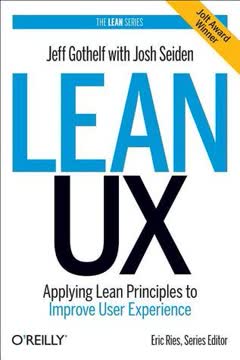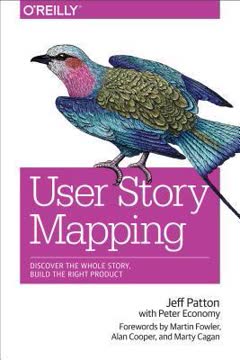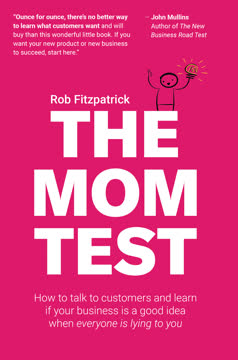Key Takeaways
1. The Build Trap: Focusing on Outputs Over Outcomes
Companies end up in the build trap when they misunderstand value. Instead of associating value with the outcomes they want to create for their businesses and customers, they measure value by the number of things they produce.
Misaligned focus. The build trap occurs when organizations prioritize the quantity of features shipped over the actual value delivered to customers and the business. This misalignment leads to wasted resources, unmotivated teams, and products that fail to meet customer needs.
Consequences of the trap:
- Reduced market share
- Increased vulnerability to disruption
- Diminished customer satisfaction
- Inefficient use of resources
- Lack of innovation
To escape the build trap, companies must shift their focus from outputs (features shipped) to outcomes (value created). This requires a fundamental change in mindset, processes, and organizational structure.
2. Product Management: The Key to Becoming Product-Led
A great product manager must be able to interface with the business, technology, and design departments and to harness their collective knowledge.
Bridging disciplines. Product managers play a crucial role in connecting various aspects of the organization to create successful products. They must balance customer needs, business goals, and technical feasibility to drive product development.
Key responsibilities of product managers:
- Understanding and articulating customer problems
- Aligning product strategy with business objectives
- Collaborating with design and engineering teams
- Prioritizing features and initiatives
- Measuring and communicating product success
To become product-led, organizations must invest in developing strong product management capabilities and empower product managers to make strategic decisions.
3. Strategic Framework: Aligning Vision, Intent, and Initiatives
Strategy is a deployable decision-making framework, enabling action to achieve desired outcomes, constrained by current capabilities, coherently aligned to the existing context.
Hierarchical alignment. A good strategic framework connects the company's vision to concrete actions through multiple levels of strategy. This alignment ensures that all efforts contribute to the overall goals of the organization.
Levels of strategy:
- Vision: Long-term aspirational goal
- Strategic Intents: Medium-term focus areas
- Product Initiatives: Specific problems to solve
- Options: Potential solutions to explore
By creating and communicating this framework throughout the organization, companies can make better decisions and allocate resources more effectively.
4. The Product Kata: A Systematic Approach to Problem-Solving
The Product Kata is the process by which we uncover the right solutions to build. It's a systematic way that teaches product managers to approach building products from a problem-solving standpoint.
Iterative learning. The Product Kata provides a structured approach to product development that emphasizes continuous learning and improvement. By following this process, product teams can systematically tackle problems and validate solutions.
Steps of the Product Kata:
- Understand the direction and current state
- Define the next target condition
- Identify obstacles
- Run experiments to overcome obstacles
- Reflect and adjust
This approach helps teams avoid jumping to solutions prematurely and ensures that products are built based on validated learnings.
5. Experimentation: Building to Learn, Not to Earn
Experimenting to learn is key. We are not creating stable, robust, and scalable products. Often, we don't know what the best solution would even be when we begin experimenting. That is the point in doing this work.
Validated learning. Experimentation is crucial for reducing uncertainty and validating assumptions before committing significant resources to building a product. By focusing on learning rather than immediate revenue, teams can make better-informed decisions and avoid costly mistakes.
Types of experiments:
- Concierge: Manually delivering the solution
- Wizard of Oz: Simulating automation behind the scenes
- Concept testing: Gauging interest in potential solutions
- Prototyping: Creating low-fidelity versions of products
Effective experimentation requires a culture that embraces learning and is comfortable with the possibility of failure.
6. Prioritization and Cost of Delay: Maximizing Value Delivery
Cost of Delay is a numeric value that describes the impact of time on the outcomes you hope to achieve. It combines urgency and value so that you can measure impact and prioritize what you should be doing first.
Economic impact. Understanding the Cost of Delay helps teams make better prioritization decisions by considering both the value of an initiative and the urgency of delivering it. This approach ensures that teams focus on high-impact work that delivers value quickly.
Factors to consider in prioritization:
- Business value
- Time criticality
- Risk reduction or opportunity enablement
- Effort required
By using Cost of Delay as a prioritization framework, teams can optimize their product development process and deliver more value to customers and the business.
7. Creating a Product-Led Organization: Culture, Communication, and Incentives
If you are a leader at a company, it's time to reevaluate how you are incentivizing people. You should be rewarding people for moving the business forward—achieving outcomes, learning about your users, and finding the right business opportunities.
Organizational alignment. Becoming a product-led organization requires more than just implementing new processes or hiring product managers. It demands a fundamental shift in culture, communication, and incentives throughout the company.
Key elements of a product-led organization:
- Outcome-focused communication
- Rewards and incentives aligned with learning and value creation
- A culture of psychological safety that encourages experimentation
- Cross-functional collaboration and transparency
- Continuous learning and adaptation
By aligning these elements, companies can create an environment where product thinking thrives and innovation flourishes, ultimately leading to better products and business outcomes.
Last updated:
FAQ
What's "Escaping the Build Trap" about?
- Focus on Value Creation: "Escaping the Build Trap" by Melissa Perri is about shifting organizations from a feature-focused mindset to one that prioritizes value creation for both the business and its customers.
- Product Management Role: The book defines the role of product management in creating a product-led organization that consistently delivers real value.
- Strategic Framework: It provides a strategic framework for aligning product development with business goals and customer needs.
- Organizational Change: The book emphasizes the need for organizational change to support effective product management practices.
Why should I read "Escaping the Build Trap"?
- Understand Product Management: It offers a comprehensive understanding of what effective product management entails and how it can drive business success.
- Avoid Common Pitfalls: The book helps identify and avoid common pitfalls in product development, such as focusing on outputs rather than outcomes.
- Practical Advice: Melissa Perri provides actionable advice and frameworks that can be applied to real-world product management challenges.
- Organizational Alignment: It guides readers on how to align their organization’s strategy, processes, and culture to support product-led growth.
What are the key takeaways of "Escaping the Build Trap"?
- Value Over Features: Focus on delivering value rather than just shipping features.
- Strategic Alignment: Align product strategy with business goals and customer needs.
- Role of Product Managers: Product managers should be empowered to make decisions that drive value creation.
- Organizational Support: Successful product management requires organizational support, including the right culture, processes, and incentives.
What is the "build trap" according to Melissa Perri?
- Definition: The build trap is when organizations measure success by outputs (features shipped) rather than outcomes (value delivered).
- Symptoms: It often results in a reactive approach to product development, where teams are busy building features without understanding their impact.
- Consequences: Companies in the build trap risk losing market share and failing to meet customer needs effectively.
- Solution: Escaping the build trap involves shifting to a product-led approach that focuses on strategic value creation.
How does Melissa Perri define a product-led organization?
- Value-Driven: A product-led organization prioritizes product success as the primary driver of business growth and value.
- Strategic Alignment: It aligns product strategy with business objectives and customer needs.
- Empowered Teams: Product teams are empowered to make decisions and are held accountable for delivering outcomes.
- Cultural Shift: The organization supports a culture of learning, experimentation, and customer-centricity.
What is the Product Kata, and how is it used?
- Definition: The Product Kata is a systematic approach to uncovering the right solutions to build, focusing on problem-solving and experimentation.
- Steps: It involves setting a goal, understanding the current state, identifying obstacles, experimenting with solutions, and learning from outcomes.
- Iterative Process: The process is iterative, encouraging continuous learning and adaptation based on feedback and results.
- Application: It helps product teams focus on delivering value by systematically tackling problems and validating solutions.
What are the roles and responsibilities of a product manager according to "Escaping the Build Trap"?
- Value Creation: Product managers are responsible for creating value by aligning product development with business goals and customer needs.
- Strategic Decision-Making: They make strategic decisions based on data, customer insights, and market research.
- Cross-Functional Collaboration: Product managers work closely with design, development, and business teams to ensure cohesive product development.
- Outcome Focused: They focus on achieving outcomes rather than just delivering outputs.
How does "Escaping the Build Trap" suggest organizations should handle strategy?
- Framework Over Plan: Strategy should be a decision-making framework, not a detailed plan, allowing for flexibility and adaptation.
- Alignment: Align strategy with company vision and strategic intents to ensure cohesive direction across the organization.
- Deployment: Deploy strategy through clear communication and alignment at all levels, from vision to product initiatives.
- Continuous Evaluation: Regularly evaluate and adjust strategy based on outcomes and market changes.
What are some of the best quotes from "Escaping the Build Trap" and what do they mean?
- "The build trap is when organizations become stuck measuring their success by outputs rather than outcomes." This quote highlights the core issue of focusing on feature delivery rather than value creation.
- "A good strategy should transcend the iterations of features, focusing more on the higher-level goals and vision." It emphasizes the importance of aligning product development with strategic goals.
- "Product managers are the ones who fit right in the middle and translate needs into a product that will satisfy the customer while sustaining and growing the business." This quote defines the critical role of product managers in bridging business and customer needs.
How does "Escaping the Build Trap" address the issue of organizational culture?
- Customer-Centric Culture: The book advocates for a culture that prioritizes understanding and meeting customer needs.
- Learning and Experimentation: It encourages a culture of learning and experimentation to drive innovation and value creation.
- Outcome-Oriented: Organizations should focus on achieving outcomes rather than just delivering outputs.
- Supportive Environment: A supportive environment is necessary for product managers to succeed, including the right incentives and safety to experiment.
What is the role of metrics in "Escaping the Build Trap"?
- Actionable Metrics: Metrics should be actionable and tied to business outcomes, not just vanity metrics that look impressive but offer little insight.
- System of Metrics: Use a system of metrics to provide a comprehensive view of product health and progress toward goals.
- Leading and Lagging Indicators: Balance leading indicators (predictive) with lagging indicators (outcome-based) to guide decision-making.
- Continuous Measurement: Regularly measure and evaluate metrics to ensure alignment with strategic goals and customer needs.
How does "Escaping the Build Trap" suggest handling product roadmaps?
- Living Roadmaps: Roadmaps should be dynamic and continuously updated to reflect current strategy and progress.
- Strategic Communication: Use roadmaps to communicate strategy and development stages to different audiences, including sales and leadership.
- Stages of Development: Clearly define stages of development (Experiment, Alpha, Beta, GA) to manage expectations and align teams.
- Alignment with Goals: Ensure roadmaps align with strategic goals and are not just a list of features to be delivered.
Review Summary
Escaping the Build Trap receives high praise from readers, with an average rating of 4.3/5. Many reviewers commend its practical advice on product management and building product-led organizations. The book is praised for its clear explanations, relatable examples, and focus on outcomes rather than outputs. Some readers found the strategy section less engaging, but overall, it's considered a valuable resource for product managers, executives, and anyone interested in product-focused organizations. Several reviewers recommend it as a must-read for those in product-related roles.
Similar Books










Download PDF
Download EPUB
.epub digital book format is ideal for reading ebooks on phones, tablets, and e-readers.





